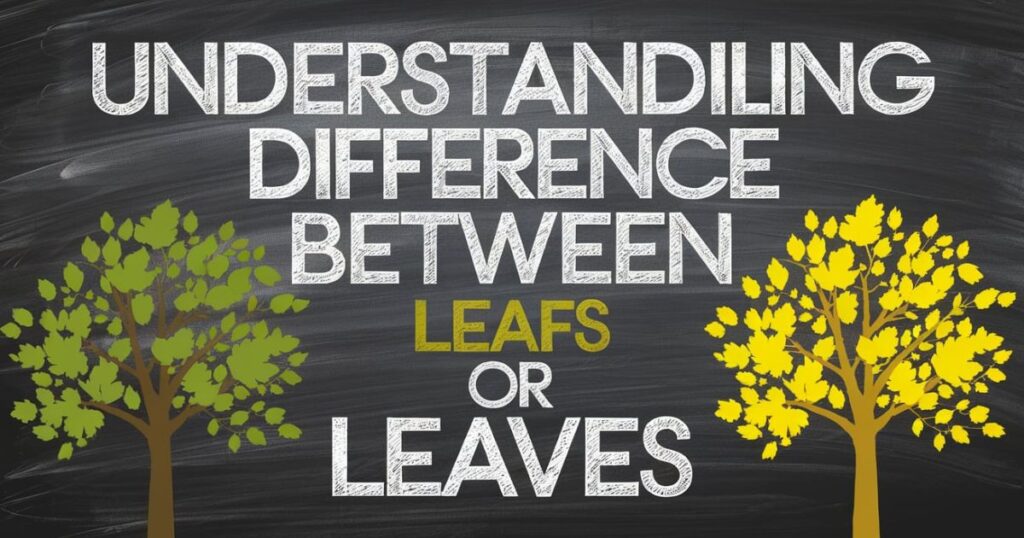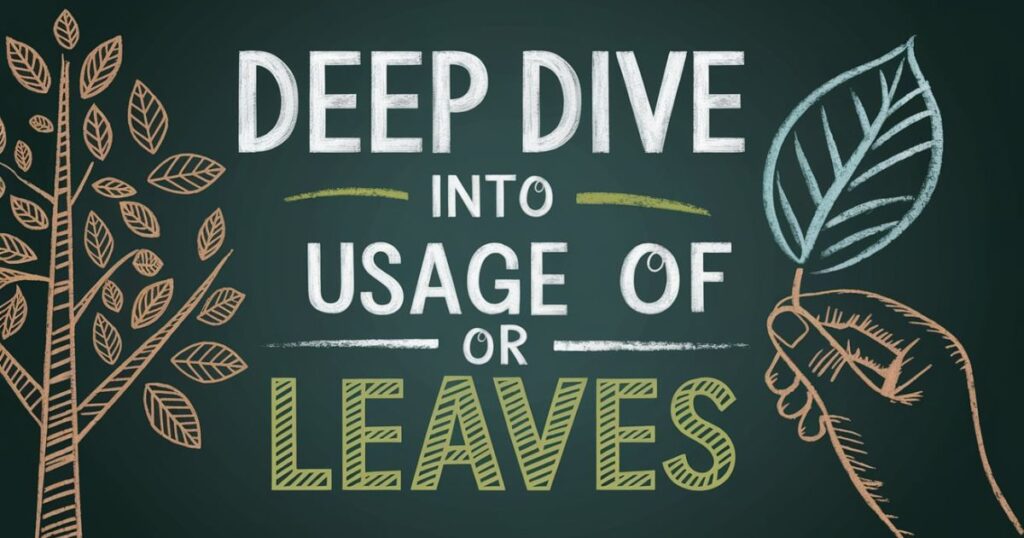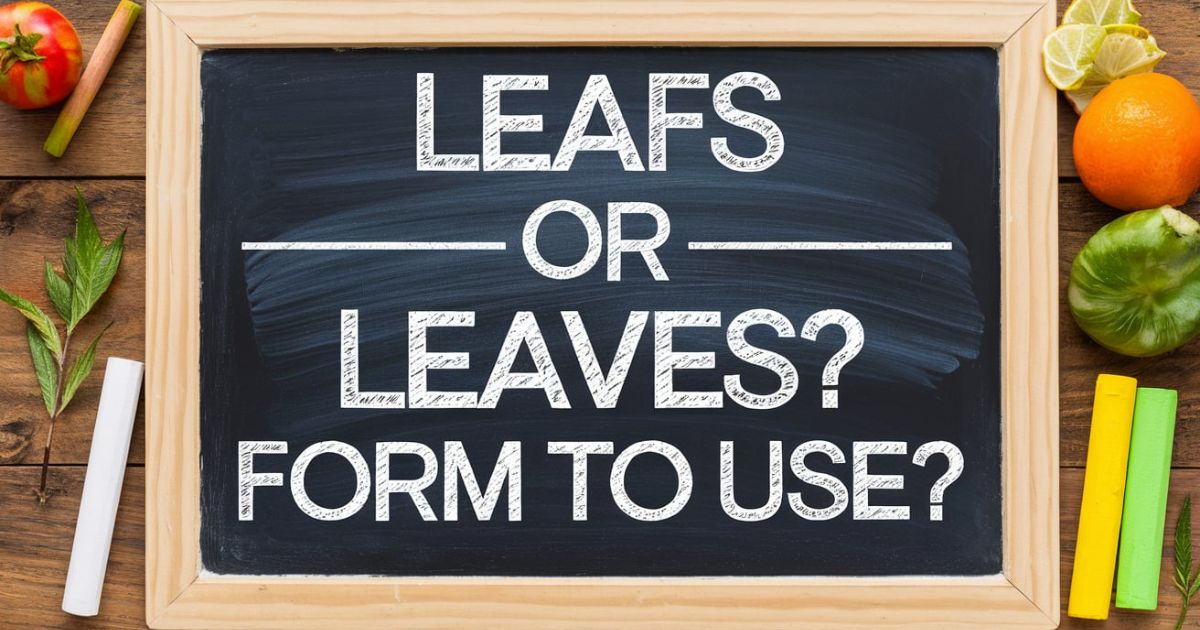The terms leafs or leaves often cause confusion for many writers, leading to questions about which form to use in different contexts. While both words relate to foliage, they serve distinct grammatical purposes. Understanding when to use “leaves” as the plural form of leaf or leafs in specialized contexts, like certain sports terms, is crucial for clear communication.
In English, “leaves” is the standard plural form of “leaf,” referring to the green parts of a plant or tree that photosynthesize. On the other hand, “leafs” can sometimes appear in specific contexts, such as in the plural of certain sports or as a verb in a less common usage.
Understanding The Difference

Understanding the difference between “leafs” and “leaves” is essential for mastering English grammar. “Leaves” is the plural form of “leaf,” used when referring to more than one leaf found on a tree or plant. For example, one might say, “The tree has vibrant green leaves in the spring.” This term is commonly used in botanical contexts, as well as in everyday language to describe foliage..
In contrast, “leafs” is much less common and primarily appears in specialized contexts. It may be used informally in certain sports, such as “leafs” referring to players from the Toronto Maple Leafs, a professional hockey team. Additionally, “leafs” can appear as a verb form when discussing the action of turning pages in a book, though this usage is rare.
Using the Right Term
- Example for “Leaves”: As autumn approaches, the leaves begin to change color and fall from the trees.
- Example for “Leafs”: The Toronto Maple Leafs are known for their passionate fanbase and rich hockey history.
Side-by-Side Comparison
| Aspect | Leaves | Leafs |
| Definition | “Leaves” is the plural form of “leaf,” referring to the green, flat structures of plants that photosynthesize. | “Leafs” can refer to the plural of “leaf” in specific contexts, such as sports teams (e.g., Toronto Maple Leafs) or as a verb form meaning to turn pages. |
| Common Usage | Commonly used in botanical discussions or everyday conversations about plants and trees. | Primarily used in reference to specific names, like sports teams, or in informal contexts relating to the action of turning pages. |
| Key Difference | “Leaves” is widely applicable and used in general contexts, while “leafs” is limited to specific usages and is less common. | The spelling and context significantly differentiate their meanings, with “leaves” being the standard plural form and “leafs” appearing only in certain cases. |
Deep Dive Into Usage

Diving deeper into usage, “leaves” appears frequently in literature, science, and everyday conversation to describe foliage, emphasizing its role in nature. In contrast, “leafs” is primarily used in niche contexts, such as sports terminology or when discussing the action of turning pages, making it less versatile in general communication.
You Like To Read This: Loosing Or Losing: Which One Is Correct?
Leafs (Proper Noun)
In specific contexts, “Leafs” serves as a proper noun, most notably referring to the Toronto Maple Leafs, a professional ice hockey team based in Canada. This team has a rich history and a passionate fanbase, making “Leafs” synonymous with Canadian hockey culture.
The use of “Leafs” in this context highlights the unique way certain terms can take on distinct meanings beyond their standard definitions.
Leaves
“Leaves” refers to the plural form of “leaf,” indicating the green, flat structures attached to plants and trees that are essential for photosynthesis. They play a vital role in the ecosystem by converting sunlight into energy and producing oxygen.
The changing colors of leaves in autumn are often celebrated for their beauty, marking a seasonal transition that captivates many nature lovers.
FAQs
What is the correct plural form of ‘leaf’?
The correct plural form of “leaf” is “leaves.” This term is used to refer to multiple leaf structures on plants and trees.
Are ‘Leafs’ and ‘Leaves’ interchangeable in everyday language?
No, “leafs” and “leaves” are not interchangeable; “leaves” is the standard plural form, while “leafs” is used in specific contexts, such as sports names.
How can I remember the difference between ‘Leafs’ and ‘Leaves’?
To remember the difference, note that “leaves” has a vowel shift (the “ea” changes to “ea”) for the plural, while “leafs” refers to specific proper nouns or actions.
What are some common mistakes to avoid when using ‘Leafs’ and ‘Leaves’?
Common mistakes include using “leafs” when referring to multiple leaves in nature instead of “leaves” and confusing the terms in casual writing or speech.
Are there any exceptions to the rule for using ‘Leafs’ or ‘Leaves’?
The primary exception is that “leafs” is used as a proper noun, such as in the name of the Toronto Maple Leafs, while “leaves” remains the standard plural form in all other cases.
Conclusion
In conclusion, understanding the difference between “leafs” and “leaves” is essential for effective communication in English. “Leaves” serves as the correct plural form of “leaf,” widely applicable in botanical contexts, while “leafs” is used primarily as a proper noun or in specific scenarios.
Common mistakes often arise from using these terms interchangeably, so awareness is crucial. Remembering the distinctions can enhance both written and spoken language, preventing confusion. By mastering these nuances, you can communicate more clearly and confidently in everyday conversations.

Grammerlytips.com, authored by Jame, offers expert tips and insights on mastering grammar, enhancing writing skills, and boosting communication effectiveness.

